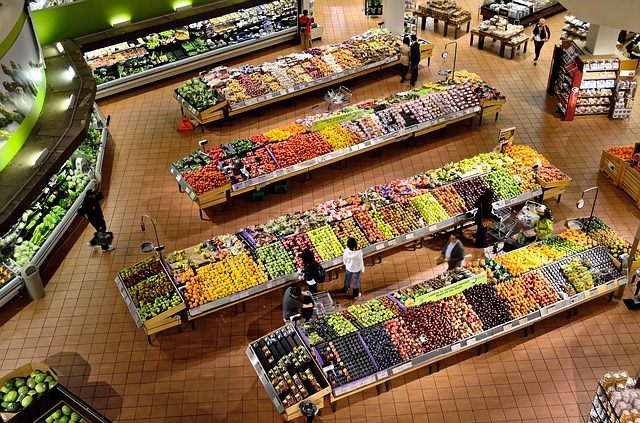February 25, 2019
CONSULTANT’S CORNER: Please enjoy this month’s issue of Consultant’s Corner — where the industry experts from HighQuest Consulting provide insight on the latest activities in the ag investing and agtech space.
By Philippe de Lapérouse and Mark Zavodnyik, HighQuest Consulting
Just as robotics and automation are increasingly being adopted in agricultural production, these technologies are also be harnessed by downstream sectors of the retail food industry.
In 2016, electronics producer Panasonic launched an initiative with Japanese grocery convenience store chain Lawson to develop an automated checkout machine called “Reji Robot,” that, according to Panasonic, had the capability to reduce store labor costs by up to 10 percent. At the time the partnership was announced, Lawson President and COO Sadanobu Takemasu told The Wall Street Journal, “[The Reji Robot] “could bring a revolution to the broader retailing industry. We all face a scarcity of labor.”[1]
While Japan has been a leader in the development of robotic technologies to address the country’s labor shortage resulting from an aging and shrinking population, the adoption of automation technology in the West is driven by other considerations.
In the dynamic U.S. grocery retail sector, competition for consumers’ food purchases is becoming fiercer as margins compress. Retailers are constantly seeking out innovative technologies to differentiate themselves from their competitors. New distribution platforms such as online ordering (FreshDirect, Peapod, AmazonFresh, etc.), and home delivery kits (Blue Apron, Plated, etc.) have further crowded the marketplace.
In the world of brick and mortar retailers, the use of robotics, AI, data sensors, etc. are proving to be the disruptors of the moment. The use of automation not only improves the in-store consumer experience (shelf scanning, price checking, aisle monitoring, etc.) and creates opportunities to engage with younger consumers, but also provides retailers access to valuable data on consumer purchasing behavior, which can be used to make informed decisions on how to handle their own supply chains.
The adoption of automation technologies in food retail has been accelerated following Amazon’s acquisition of Whole Foods in 2017, and the launch of Amazon Go retail outlets which leverage a range of automation technologies to provide customers with a unique shopping experience, including no checkouts and no lines.
To keep up with Amazon’s push into the grocery channel, some of the biggest established grocery retailers are now focusing on the integration of these technologies in both their stores and supply chains. For example, in March 2018, Walmart announced that it was testing the use of robots in stores to monitor inventory, check prices, and notify humans of re-stocking needs, etc.[2]
More recently, in January 2019, Giant Food Stores announced that it was rolling out its “Marty” robot across its 172 stores located in Pennsylvania, Maryland, Virginia, and West Virginia. According to a message labeled on the robot itself, “Marty is an autonomous robot that uses image capturing technology to report spills, debris, and other potential hazards to store employees to improve your shopping experience.” The rollout is part of an effort by Ahold Delhaize USA, Giant’s parent company, to deploy as many as 500 Marty robots across its network of U.S. retail chains, which also include Martin’s and Stop & Shop.[3]
In addition to maximizing operating efficiencies within stores, new automation technologies are also being used to automate and reduce labor costs incurred further up the supply chain. In May 2018, Kroger and British online supermarket Ocado announced a partnership to build the first automated grocery warehouse in Ohio. The agreement provides Kroger with an opportunity to tap into the technology developed by Ocado, which operates warehouses using robots to process as many as 65,000 online grocery orders per week.[4]
Interestingly, while the use of robots may have been originally intended as a labor-saving technology, announcements by retailers in the U.S. and Europe of intentions to adopt automated technologies in their stores are often accompanied by promises from management that the use of robots are not intended to result in reductions of in-store workforce.
In October 2018, Midwest grocer Schnuck Markets announced that it was rolling out its robot, “Tally” to 15 of its stores. Tally, the result of a partnership between Schnuck Markets and Simbe Robotics, can provide alerts for out-of-stock items, look for pricing errors, and deliver real-time sales metrics to brand manufacturers.[5] In comments made to the St. Louis Post-Dispatch, Schnuck Markets VP of IT Infrastructure and Application Development Dave Steck said, “This is not to displace jobs. It still takes someone to order [merchandise], receive it from the warehouse and ultimately to stock it. There are no arms or legs on this robot.”[6]
Going forward, adoption of automation technologies such as robotics in grocery retail will likely be driven primarily by the opportunity it provides to gain novel insights into consumer behavior as well as providing real, tangible cost savings into supply chain management, as opposed to focusing on reducing labor costs.
ABOUT THE AUTHORS
Philippe de Lapérouse is a managing director at HighQuest Partners, a leading global strategy advisory and consulting firm. HighQuest advises strategic players operating in and financial investors allocating capital to the global food and agricultural value chains on making informed decisions on strategy and resource allocation. Lapérouse chairs the Global AgInvesting conference series. He can be reached in St. Louis at +1 314.960.1632 or via email at pdelaperouse@highquestpartners.com.
Mark Zavodnyik is project manager for HighQuest Partners where he leads the day-to-day execution of consulting projects, advising clients on strategy and investment decisions across the global agricultural value chain. Previously, he was the lead tropical oils trader at AAK USA with responsibility for all sourcing, trading, and risk management in the United States. Zavodnyik has spoken at industry conferences on the efforts the industry has undertaken to make palm oil more environmentally sustainable. He can be reached at +1.574.274.3099 or mzavodnyik@highquestpartners.com.
[1] https://www.cnbc.com/2016/12/14/panasonic-introduces-robotic-checkout-at-a-grocery-store-in-osaka.html[2] http://fortune.com/2018/03/26/walmart-robot-bossa-nova/
[3] https://www.washingtonpost.com/technology/2019/01/14/giant-food-stores-will-place-robotic-assistants-inside-locations-company-says/?noredirect=on&utm_term=.453d42e80688
[4] https://www.forbes.com/sites/lanabandoim/2018/11/19/kroger-and-ocado-plan-to-build-first-automated-robot-warehouse-in-ohio/#7dcd092d5ea3
[5] https://nourish.schnucks.com/web-ext/news/news-detail/570
[6] https://nypost.com/2017/07/27/the-robot-invasion-has-begun-in-the-grocery-aisle/

Let GAI News inform your engagement in the agriculture sector.
GAI News provides crucial and timely news and insight to help you stay ahead of critical agricultural trends through free delivery of two weekly newsletters, Ag Investing Weekly and AgTech Intel.




